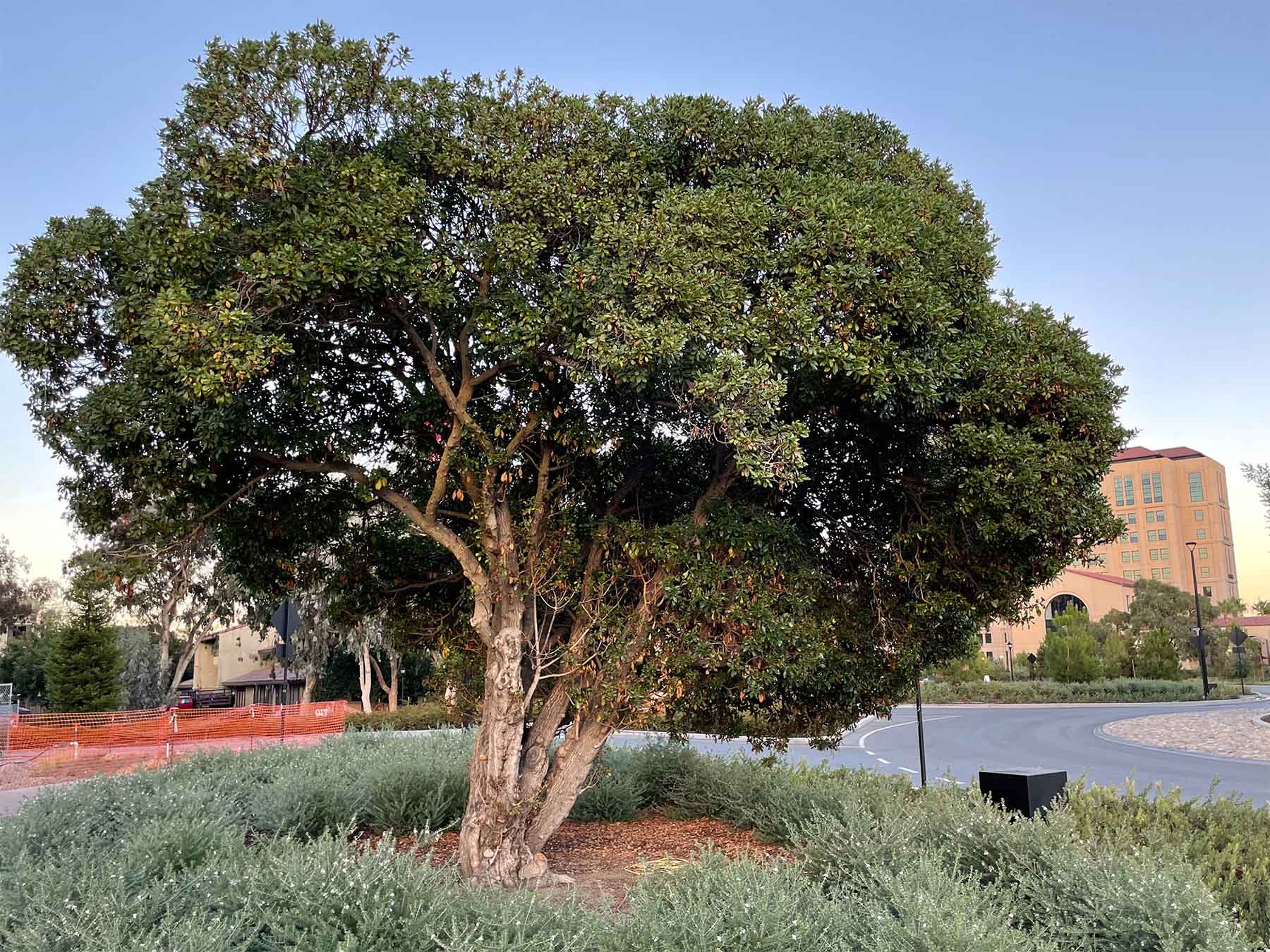Myoporum laetum
 ngaio
ngaio
A rapidly growing shrubby screen plant, identifiable by the translucent oil dots that may be seen by holding the glossy leaves to the light. It has small white bells with petals bearing avenues of reddish-brown spots; the fine scale suggests that the spots are for the guidance of small flies searching for the nectar in the tiny bells. The flowers come in clusters and are followed by reddish-purple berries.
Most of campus’s ngaio has disappeared in recent years, for example along the Campus Drive pathway at Castaño. A large survivor of much construction is at the northwest corner of the intersection of Jane Stanford Way and Campus Drive. Two large vigorous shrubs are on the west side of Campus Drive between Santa Teresa Street and Searsville Road, on the edge of the parking lot. Another is at 749 Mayfield Avenue.
Name derivation: Myoporum – Greek myo (to close) and poros (opening, pore), referring to the translucent dots on the leaves that are filled (closed) with liquid; laetum – Jan de Laet, Belgian patron of botany (or Latin laetum – pleasant).
About this Entry: The main text of this entry is from the book Trees of Stanford and Environs, by Ronald Bracewell, published 2005. All locations updated (Sep 2022, SP). Campus Drive locations added; minor edits (Feb 2024, SP).





